'Fabrication: A Message Folded, Moulded and Stitched' is a group exhibition curated by Kristen McClarty and Laurel Holmes which opened on Saturday 24 September 2022 at StateoftheART Gallery in Cape Town.
This artist-run exhibition brings together eight women artists working in various media, borne out of a rich history of craft, but that have now moved to a place of acceptance as contemporary art. The exhibiting artists are Katja Abbott, Cathy Abraham, Willemien De Villiers, Laurel Holmes, Maia Lehr-Sacks, Kristen McClarty, Jo Roets and Lindsay Quirk.
Read the profound and inspiring opening address by Gretchen van der Byl below.
FABRICATION opening address by Gretchen van der Byl:
Let me start at the very beginning, with a word, the title of this show – Fabrication. With its emphasis on the making, and its conjuring of the space of making, the word naturally invokes the old distinction between thinking and doing, a distinction that for too long has subjugated the act of making to a secondary, explanatory and supportive role.
The head versus the hand, in which the controlling head has held the making hand within the bounds of too narrow a calling. The idea that lies at the heart of this exhibition is precisely that leap of faith, when the hand, confident in its autonomy, enacts upon the world its capacity for remaking it.
But the word fabrication has another meaning.
Because of course to fabricate means to lie. And not just an ordinary lie, but a sustained and elaborate deception. And this has curious implications for what we do. After all, no one – besides Plato - ever reasonably accused a painting of lying about the world it purports to show us. And I doubt that Katja Abbott’s work will be accused of perpetrating an ornithological deception against zoology.
Yet what after all are we doing in the studio, but engaging in an elaborate and sustained remaking of the world? A remaking that can look – from a certain point of view - remarkably like a lie.
So, we might ask, what is the relationship of deception to the studio? Or perhaps a better question might be: How are the apparent certainties and truths of the world suspended or inverted within the space of making?
There is something essential to the act of making that stands inevitably against the rules that largely structure and govern the world, and our primary notions of value, time, truth, of being-in-the-world.
So I crave your indulgence as I think aloud about some of these suspended truths.
The Second Law of Thermodynamics tells us that time moves inexorably forward, one moment marching resolutely on after the next, a straight line spooling out behind us, beckoning us forward, the past forever inaccessible.
And yet how much purchase does this ostensibly objective reality have within the subjective space of the studio? Because, after all, today is no more, and no less, than the yesterday of tomorrow. Sitting within the space of making time loops, folds over and into itself. (The image which persistently presents itself to my mind is puff pastry, its 2187 painstakingly folded layers all presenting themselves simultaneously to each bite).
Cathy Abraham’s counting and marking of successive moments no more limits itself to an expression of one dimensional linear time than do the primal experiences of being born, living and dying. And her work no more finds its meaning limited to the articulation of a ticking clock than does the repeated action of waves upon a shore.
Similarly Lindsay Quirk’s pieces conflate time with a shard of discarded ceramic, nestled at the heart of her timepieces, distilling a lifetime’s portions of life into a fragment of stone.
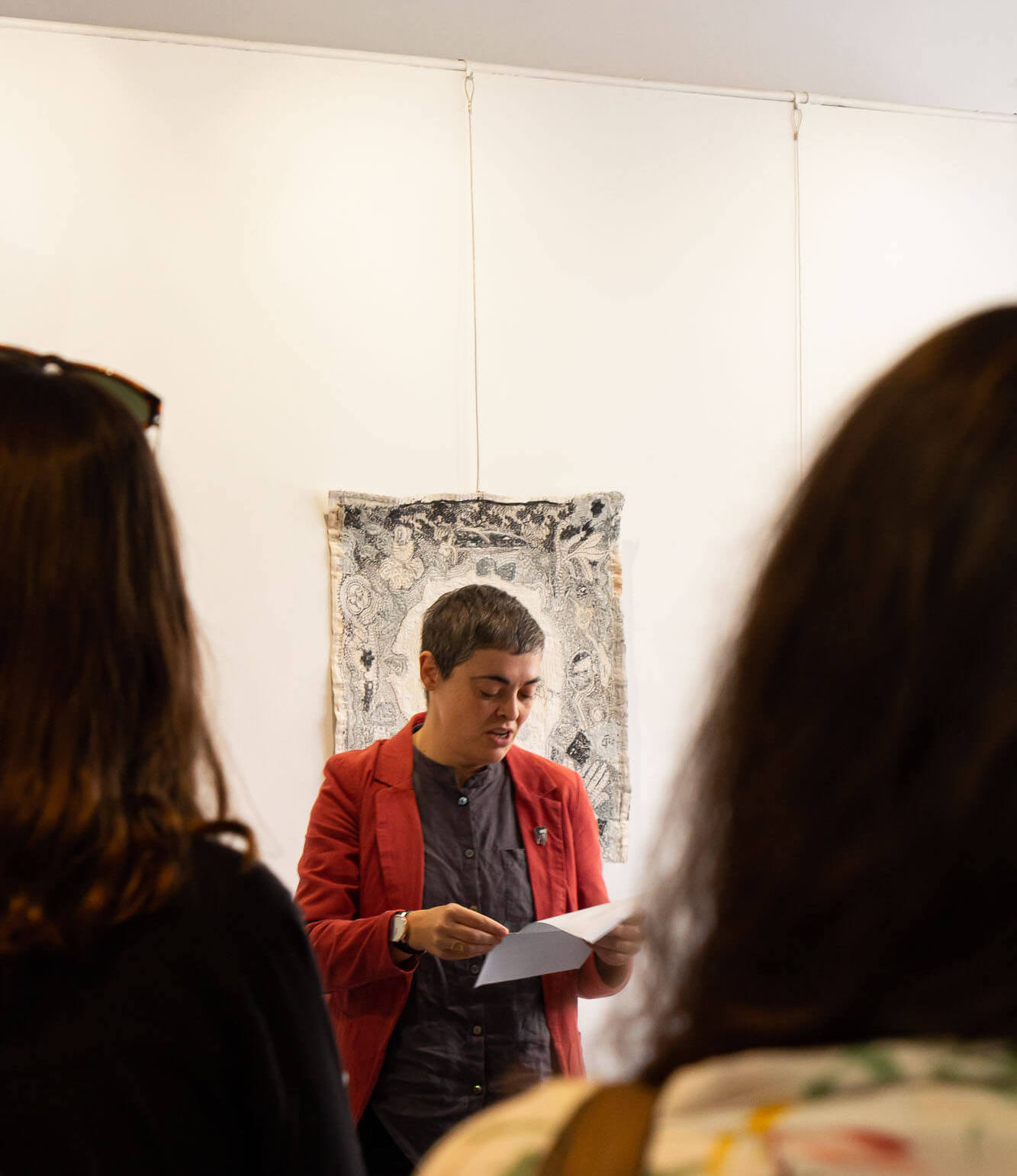
How do we reconcile the repeated actions of stitching, folding and mark-making to any conventional concept of useful labour and useful time?
TS Eliot wrote:
“At the still point of the turning world. Neither flesh nor fleshless;?
Neither from nor towards; at the still point, there the dance is,?
But neither arrest nor movement. And do not call it fixity,?
Where past and future are gathered. Neither movement from nor towards,
Neither ascent nor decline. Except for the point, the still point,
There would be no dance, and there is only the dance.”
And it is this conception of time, as the still point of the turning world, where past and future are gathered, that begins to grasp at the peculiar endeavour that making ultimately is.
What is it that our work asks of us in the making? It is of course a profound sitting in the present moment. But it is a present clotted with the past and in some ways with the future, and with every instance that has honed every instinct that flows out of the hand in that moment of making, in the gesture, in the mark.
Every moment is lensed and focused through every other moment. It is the still point, but it also ricochets back and forth through time, and holds within itself the richness of all our being-in-the-world across time.
The Second Law of Thermodynamics cannot account for the particular ways in which the studio escapes the clutches of linear time. Procrastination, we are told, is antithetical to productivity. But anyone who has sat in the space of making, and allowed the necessary hours to pass as they will, as the forces gather in the eye and the hand, knows that this conception of what is useful time, and what is not, misses the point.
According to David Whyte:
“Procrastination is not what it seems. What looks from the outside like our delay, our lack of commitment, even our laziness, may have more to do with a slow, necessary ripening through time, and the central struggle with the realities of any endeavor to which we have set our minds.”
To think about time in a limited linear way, is to be unequal to the gift of revelation and the ways in which it works its own way, only emerging when the qualities it represents have achieved a firm correspondence in our necessarily struggling hearts and imaginations.
And what of value? We see in the work around us today a particular and consistent attention to residue, the residual, the left-over, the discarded.
Michelangelo – perhaps apocryphally – said that he didn’t shape his sculptures himself, but merely removed stone to reveal the form already present within the formless marble block. But what of that removed stone?
Was it not as valuable? Is not the space from which the desired object lifts itself into being as important as the desired object? Does the ground of emergence not hold, in a very real sense, the form of the desired? Who has not gazed with love at the form of the departed beloved left behind in the undulations of the bedsheets? When we bring our attention to these residual fragments they begin to speak collectively, so our shared sense of left-over- ness.
To the dark and bitter worry that we may, ourselves, be merely residual. To bring attention to these left-over fragments is to redeem them, to rehabilitate them into a space of care and value. And thus may we redeem ourselves.
Imagine how greedily we might grasp at Michelangelo’s discarded marble fragments today.
The space of making is where we attempt to reconcile the eternal struggles of the world, to reconcile the objective and the subjective, to hold the paradox that the objective view is always predicated on and nestled deep within the subjective view.
Thomas Nagel’s philosophical text The View From Nowhere is about this single problem: how to combine the particular subjective perspective of a person in the world with an objective view of that same world, the person and their view included. This problem faces any being with the impulse and capacity to transcend its point of view and to conceive of the world as a whole.
And conceiving of the world as a whole is precisely what we attempt to do.
Reality includes the subjective, and any objective conception of reality must concede its own limitations.
Some things can only be understood from within, or from a subjective point of view, and access to them will depend on the extent of our subjective imagination.
We live in a world torn between the attempt to grasp at an objective reality, and the fact of our subjective passions.
But if we simply pay attention to our particular experience, or to a thing in the world, the question of significance from different standpoints will disappear. This partly explains why beauty tends to unify the self: the object of beauty engages us immediately and entirely in a way that makes distinctions among points of view irrelevant.
Perhaps it is possible to reach a state of enlightenment where the distinction between points of view is permanently dissolved, but in the meantime perhaps there is something to gain from those instances of unity that can be coaxed forth by beautiful things.
And beautiful things are what we see here.
The space of making, both internal and external is a place of profound privilege. It is the space of being, of bringing-into-being, both of object and of self.
German philosophy has a wonderful word ‘Dasein’, which translates to ‘the experience of being-there’.
The space of making itself may not be fixed in time or location. The space is constituted, reiterated, conjured up wherever and whenever one makes. Like tortoises we carry our studios on our backs, the mobile embassies of a country that stands apart from and observes the world that swirls in its blind frenzy around us.
This is not to say that making is not concerned with the world, for it is profoundly concerned with it. But making both asks of us and offers us a way of being in the world that allows us to posit: how could it be different?
Our certainties crumble within this privileged space of making. Laurel Holmes’ fragile boxes point to the precarious nature of our deepest held systems of knowledge, and ask: how could it be different?
When we free ourselves from the grip of the conventional, when we sit in the space of fabrication (with both its meanings), we begin to see how the smallest gesture, the slightest thing, the merest fragment, a piece of folded paper, can mean everything.
Making is, in the end a profound act of love, because what is love but sustained and careful attention. And when we pay attention to the thing we are urged to bring forth, what is that but love? Maybe, after all, love of making is the one certainty that survives.
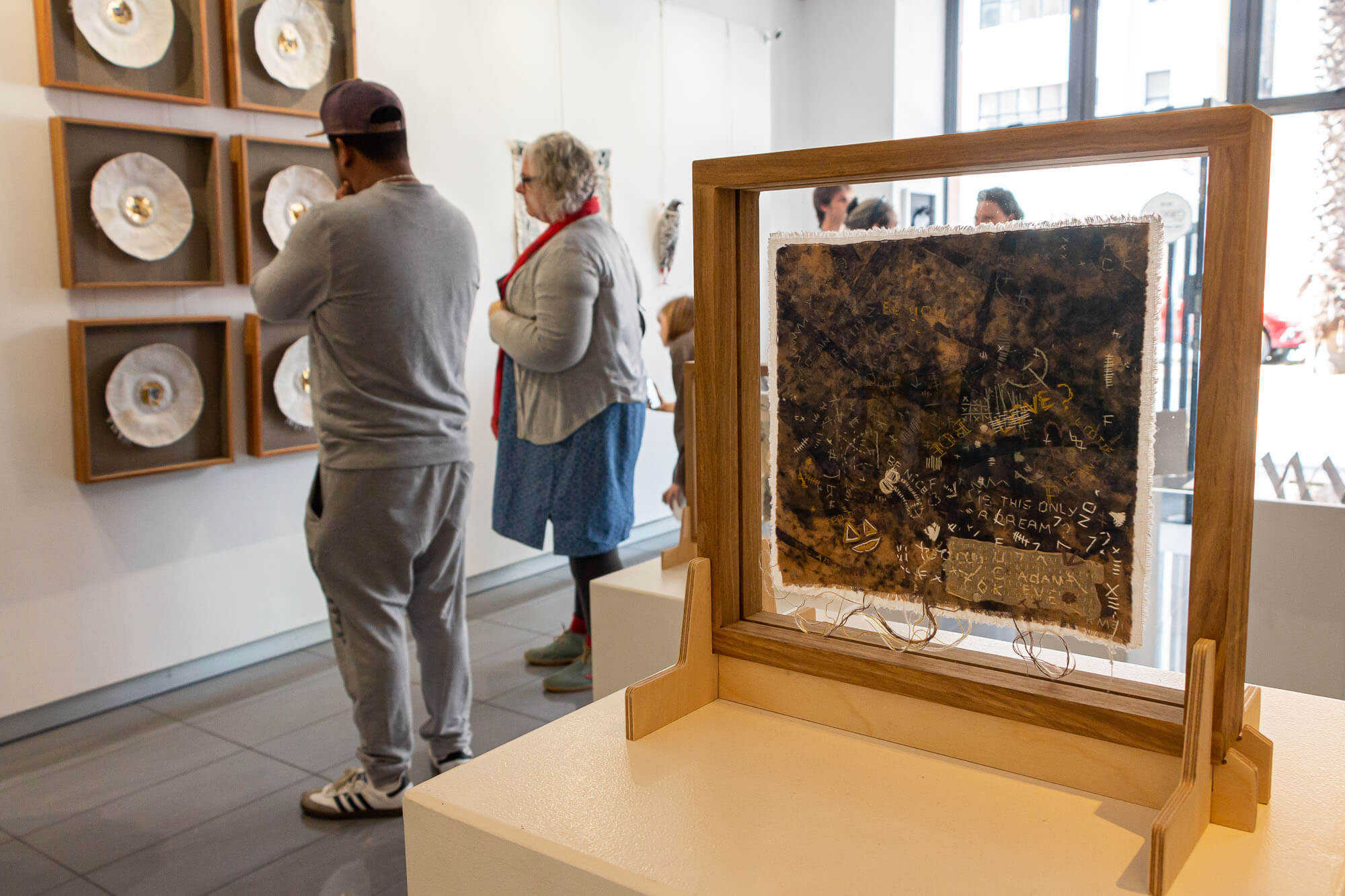
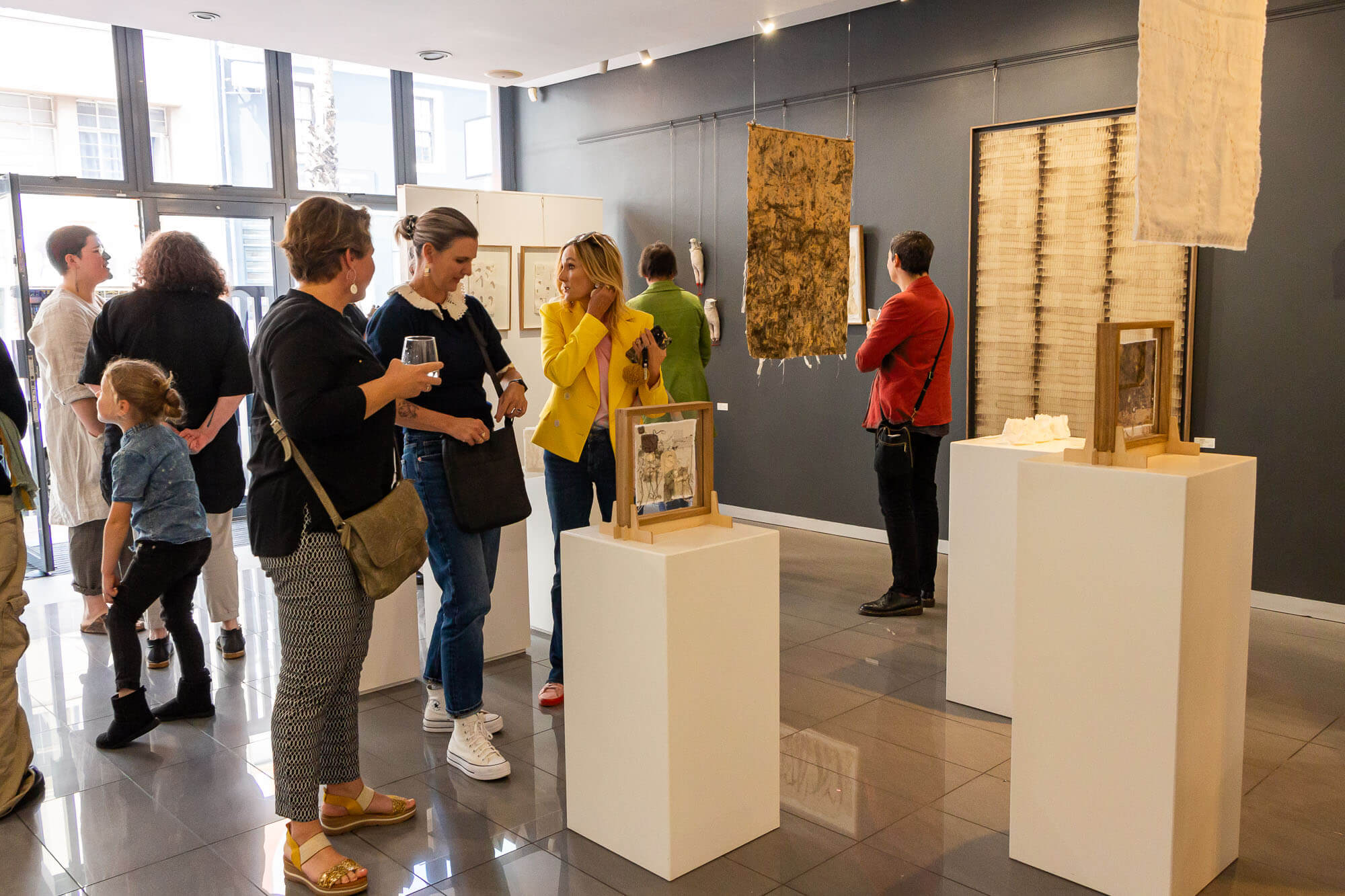
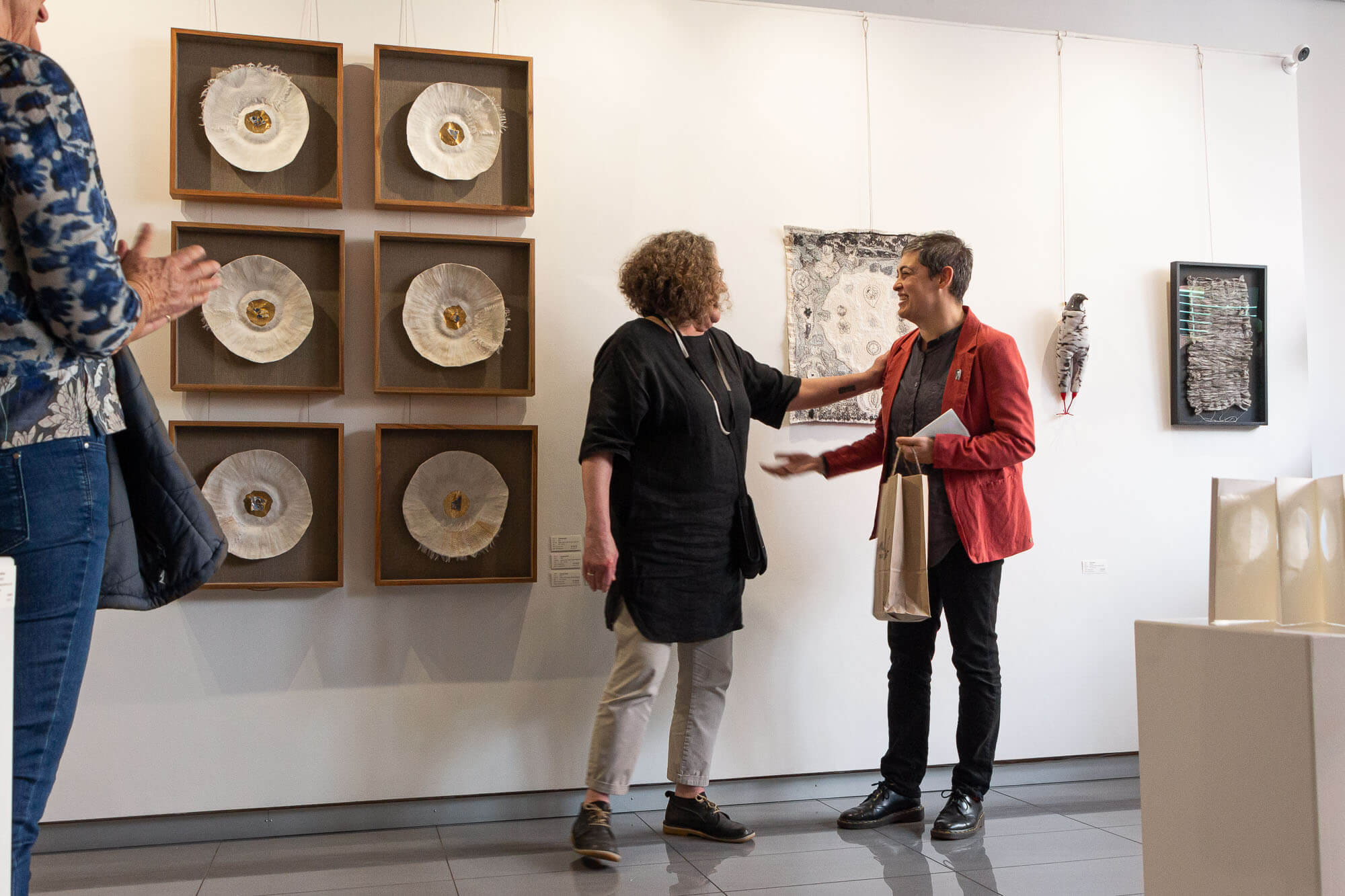
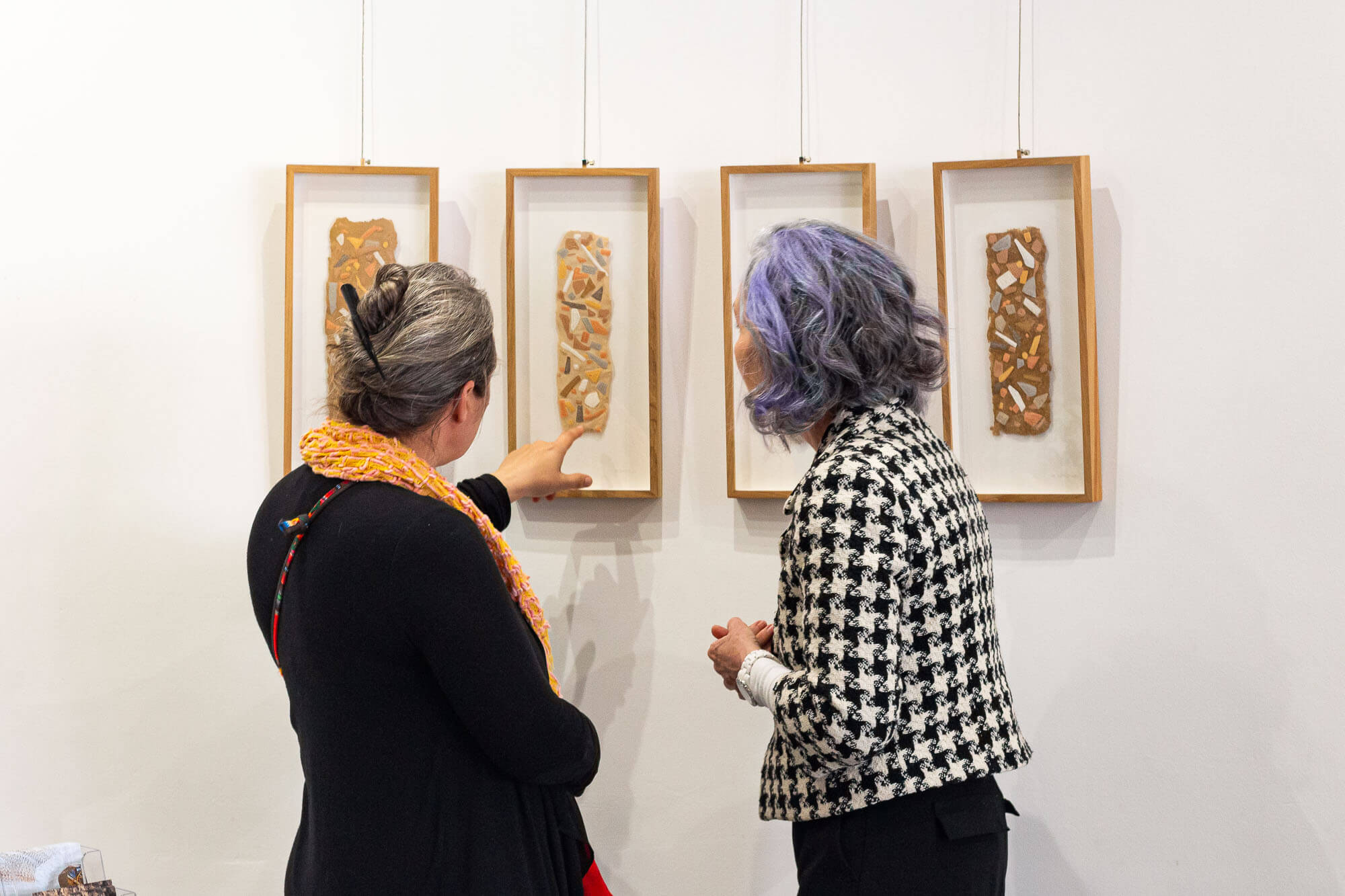
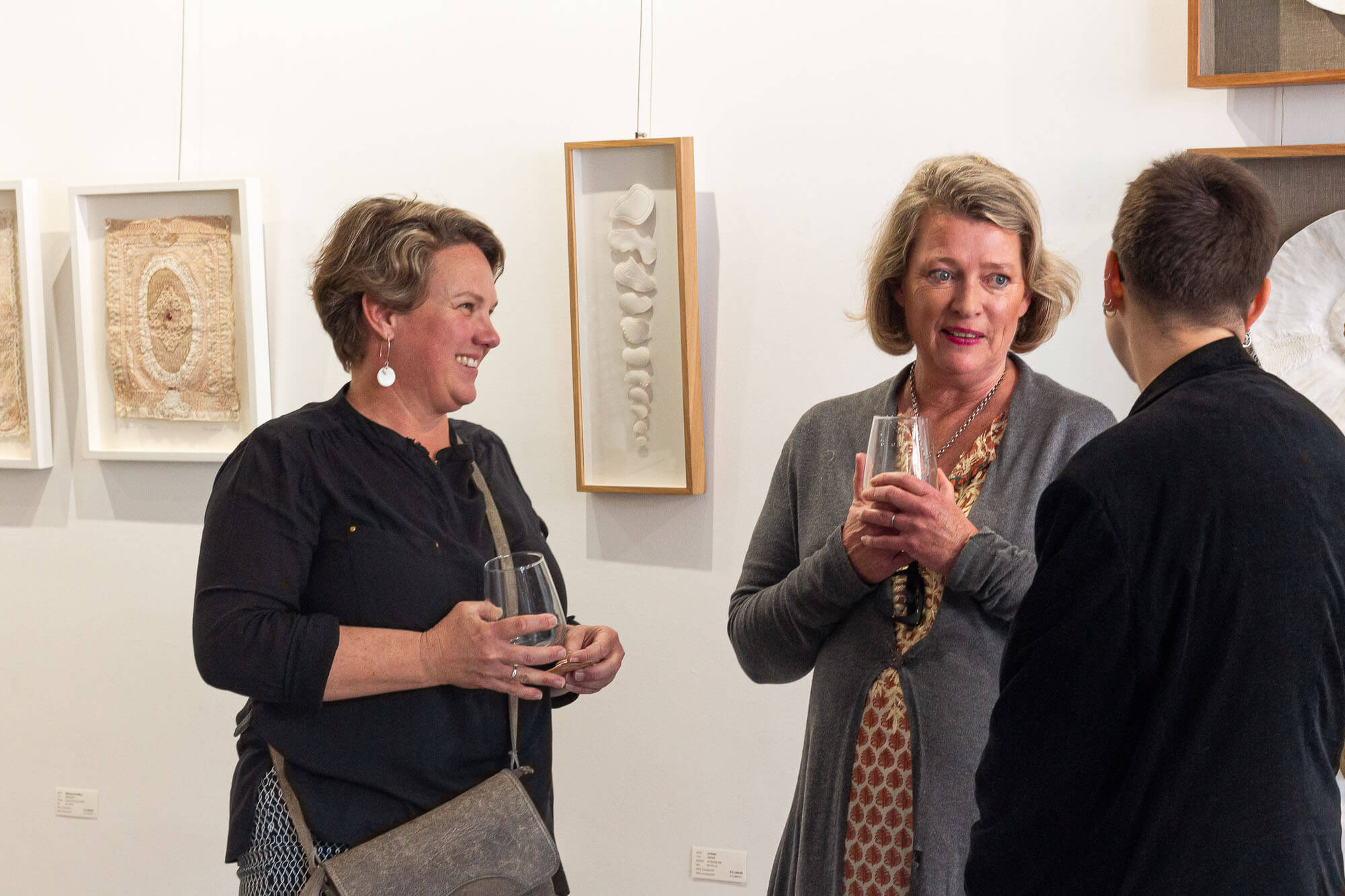
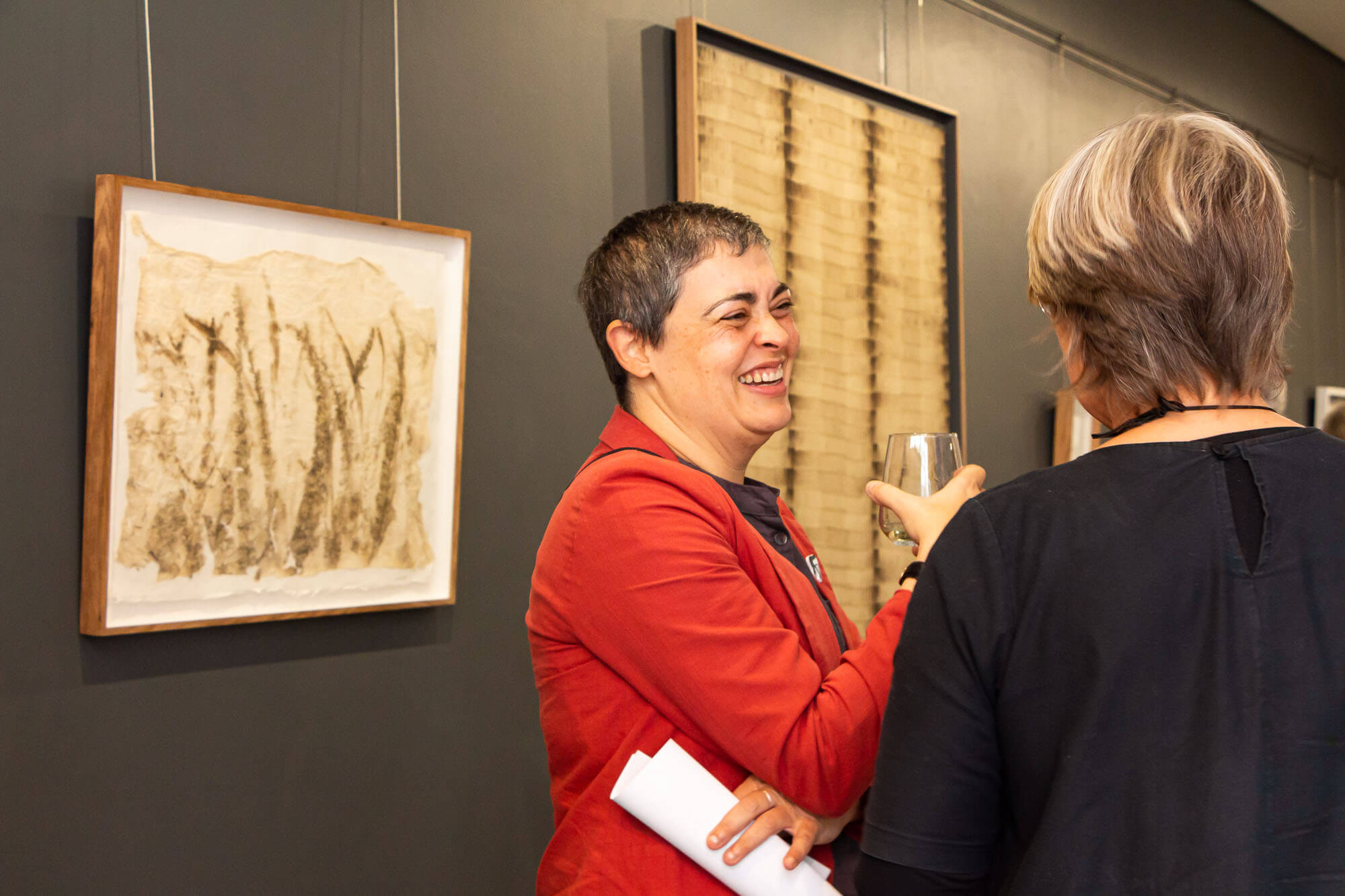
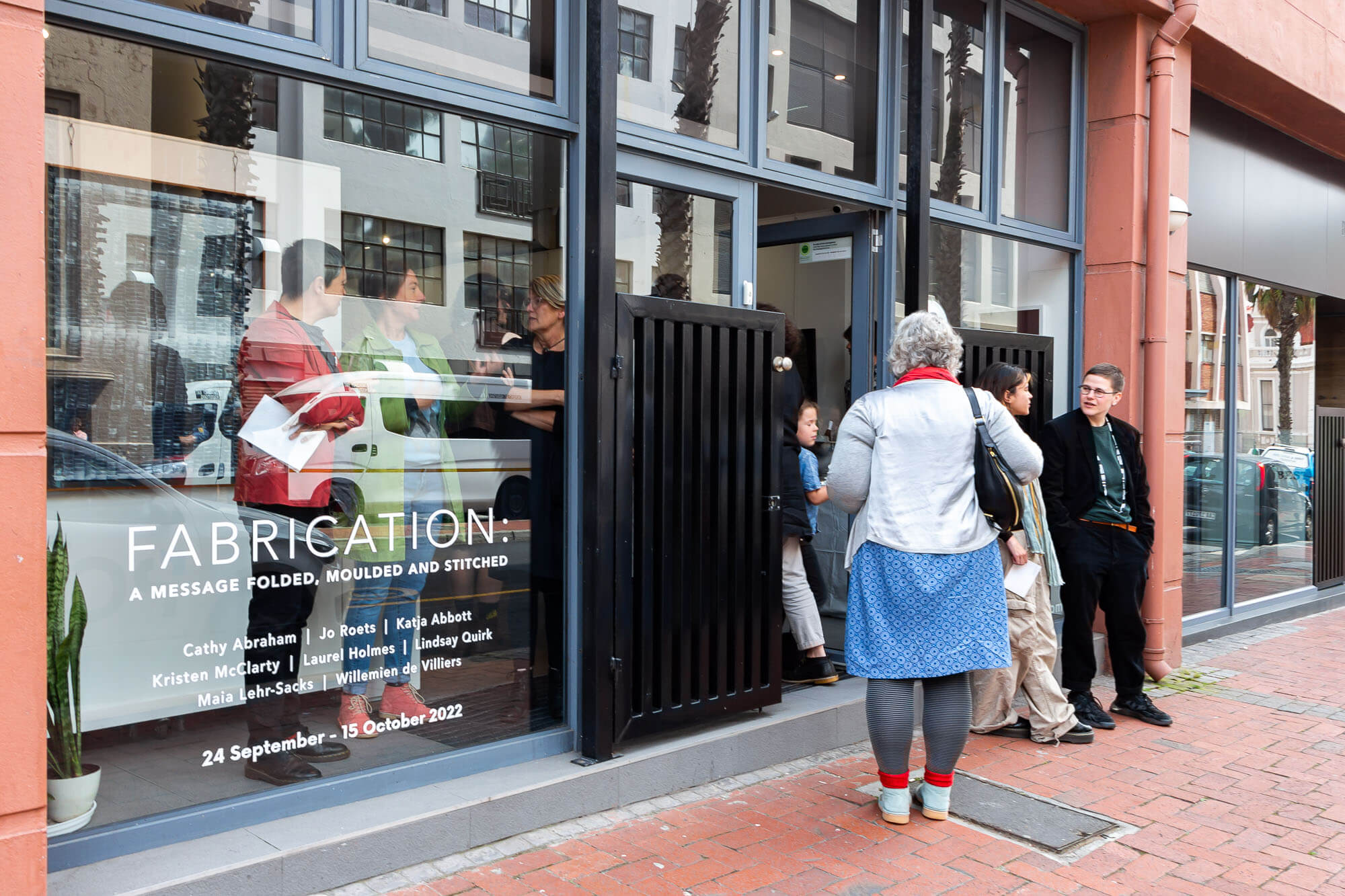
StateoftheART prides itself on innovative and diverse projects, and by hosting artist-led exhibitions we are opening our space to fresh voices and new ideas - whilst providing artists with an opportunity to push the boundaries of their own practice.
The exhibition continues until 15 October 2022.
Browse the available artworks online, or visit the Gallery at 50 Buitenkant Street in Cape Town.

